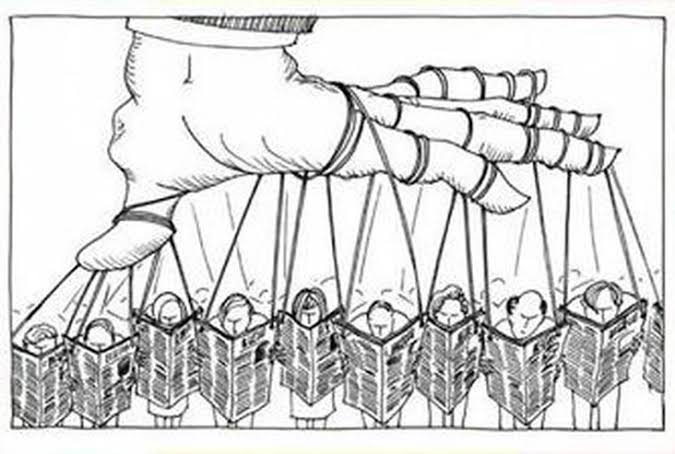Printed Punditry and Public Opinion: Why Traditional Media Still Shapes Minds
In an era dominated by instant news updates, social media debates, and algorithm-driven content, many assume that printed media has lost its influence. However, printed punditry continues to play a powerful role in shaping public opinion. Newspapers, magazines, and journals remain trusted sources of analysis, offering depth, credibility, and perspective that digital platforms often struggle to match.
Printed opinion writing does more than report events; it interprets them. Through editorials and opinion columns, print media helps readers make sense of political decisions, social movements, cultural shifts, and global affairs. Even in a digital-first world, the ideas originating from printed punditry often guide conversations across television, online news, and social media platforms.
Understanding the Concept of Printed Punditry
Printed punditry refers to opinion-based writing published in traditional print media. This includes editorials, columns, essays, and expert commentary authored by journalists, academics, political analysts, and cultural critics. Unlike straight news reporting, punditry focuses on interpretation, argument, and persuasion.
The purpose of printed punditry is not simply to inform but to challenge readers to think critically. These writings analyze causes, predict outcomes, and evaluate policies, offering readers a framework for understanding complex issues.
How Printed Punditry Shapes Public Discourse
One of the most significant functions of printed punditry is its ability to frame public discussion. By choosing which issues deserve attention and how they should be interpreted, print opinion writers influence what society debates and how those debates unfold.
When respected publications highlight certain topics, they signal importance. Readers often adopt these priorities, which then spread into broader public conversations. This agenda-setting power allows printed punditry to guide societal focus long before issues trend online.
Authority and Expertise in Print Opinion Writing
Printed punditry is often associated with expertise. Opinion writers in established publications usually possess deep subject knowledge, professional experience, or academic credentials. This authority gives their arguments weight and legitimacy.
Readers tend to trust these voices because they are accountable to editorial standards. Unlike anonymous online commentary, printed punditry is tied to real names, reputations, and institutions, reinforcing credibility.
Historical Influence of Printed Punditry on Society
Throughout history, printed opinion writing has played a defining role in shaping political and social outcomes. In many cases, print media served as the primary channel for public debate and reform advocacy.
Political revolutions, constitutional debates, labor reforms, and civil rights movements have all been influenced by persuasive writing in newspapers and journals. These texts provided intellectual foundations for change and mobilized public support.
Printed Opinion Writing in Political Movements
Printed punditry has long been intertwined with political transformation. Editorials and essays have historically been used to support or challenge governments, advocate policy reform, and mobilize citizens.
By presenting structured arguments and moral reasoning, print media has influenced voter attitudes and legislative priorities. Even today, policymakers often monitor print editorials to gauge elite and public sentiment.
Role of Printed Punditry in Social Reform
Social justice movements have frequently relied on printed opinion to articulate grievances and propose solutions. From labor rights to gender equality, printed essays have helped humanize social issues and challenge dominant narratives.
The permanence of print gives these ideas longevity. Unlike fleeting social media posts, printed arguments can be revisited, cited, and studied over time.
Trust and Credibility in the Print Media Era
One reason printed punditry continues to influence public opinion is trust. Established print publications operate under editorial oversight, fact-checking standards, and ethical guidelines.
Readers often view print media as more reliable than online platforms where misinformation spreads rapidly. This perception strengthens the persuasive power of print opinion writing.
Depth and Thoughtfulness in Printed Analysis
Printed punditry allows for nuance. Writers are not constrained by character limits or rapid publishing cycles. Instead, they can develop layered arguments, acknowledge counterpoints, and provide historical context.
This depth appeals to readers seeking understanding rather than quick reactions. Long-form analysis encourages reflection and informed judgment.
How Printed Punditry Influences Digital Conversations
Ironically, much of today’s online discourse originates in print. Opinion pieces published in newspapers and magazines are frequently shared on digital platforms, quoted in broadcasts, and debated on social media.
Printed punditry often sets the tone for digital discussions, acting as a source of authoritative narratives that are amplified online.
Printed Punditry and Policy Influence
Printed opinion writing maintains direct influence over policymaking. Politicians, advisors, and institutional leaders regularly engage with print editorials to assess public and elite opinion.
In many cases, editorials serve as indirect communication between the public and policymakers. Well-argued pieces can pressure governments to reconsider positions or introduce reforms.
Comparing Printed and Digital Opinion Influence
| Aspect | Printed Punditry | Digital Opinion Media |
|---|---|---|
| Credibility | High due to editorial oversight | Varies widely |
| Depth of Analysis | Extensive and detailed | Often brief and reactive |
| Longevity | Long-lasting and citable | Short attention span |
| Influence on Policy | Strong | Indirect |
The Evolution of Printed Punditry in the Digital Age
Printed punditry has not remained static. Traditional publications have adapted by expanding into digital formats while preserving their editorial values.
Many newspapers now publish print-quality opinion pieces online, reaching global audiences while maintaining depth and credibility. This hybrid model strengthens influence rather than diminishing it.
Integration of Multimedia and Print Commentary
Modern printed punditry increasingly incorporates multimedia elements. Podcasts, video discussions, and interactive features complement traditional opinion writing.
This integration enhances accessibility while preserving analytical rigor. Readers can engage with ideas across multiple formats without sacrificing substance.
Challenges Facing Printed Punditry Today
Despite its strengths, printed punditry faces significant challenges. Declining print circulation, rising production costs, and competition from free digital content threaten traditional business models.
Additionally, polarization and declining trust in institutions can reduce the persuasive power of opinion writing.
Opportunities for Reinvention and Growth
These challenges also create opportunities. Print publications can differentiate themselves by focusing on quality, expertise, and depth rather than speed.
Niche specialization, investigative opinion, and intellectual leadership can attract loyal audiences seeking thoughtful analysis.
Printed Punditry and Cultural Identity
Printed opinion writing reflects and reinforces cultural values. Through debates on ethics, tradition, and progress, pundits help societies negotiate identity and change.
These discussions contribute to collective understanding and social cohesion, especially during periods of uncertainty.
Educational Role of Printed Opinion Writing
Printed punditry plays an educational role by explaining complex issues in accessible language. Readers gain historical context, policy insight, and analytical tools that enhance civic literacy.
This educational function strengthens democracy by fostering informed participation.
Long-Term Impact on Public Opinion Formation
Public opinion rarely forms overnight. Printed punditry contributes to gradual attitude shifts through consistent argumentation and repeated exposure to ideas.
Over time, these narratives influence how societies perceive justice, governance, and responsibility.
Printed Punditry in a Fragmented Media Landscape
In today’s fragmented media environment, printed punditry provides a stabilizing influence. Its commitment to coherence, evidence, and reasoning counters the chaos of viral misinformation.
This role becomes increasingly valuable as audiences seek clarity and reliability.
Conclusion
Printed punditry remains a powerful force in shaping public opinion, even in the digital age. Its credibility, depth, and authority allow it to influence discourse, policy, and cultural values in ways that digital media often cannot replicate. By adapting to new technologies while preserving editorial integrity, printed opinion writing continues to guide public thought and democratic debate. As societies navigate complex challenges, the enduring influence of printed punditry ensures that thoughtful, informed perspectives remain central to public discourse.







